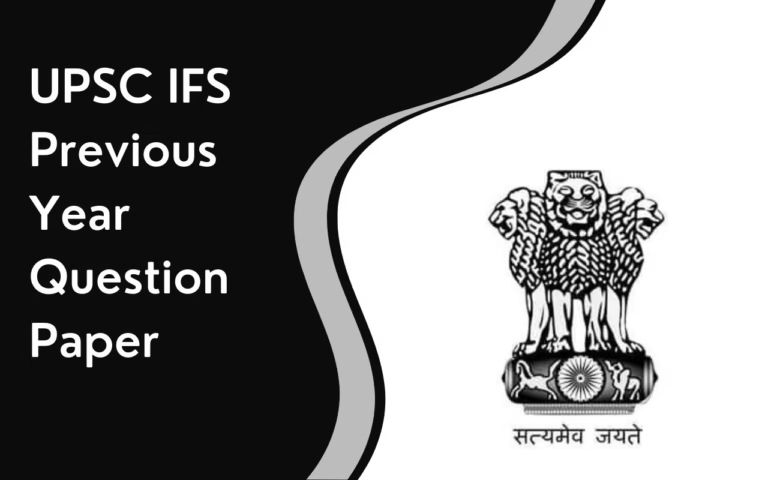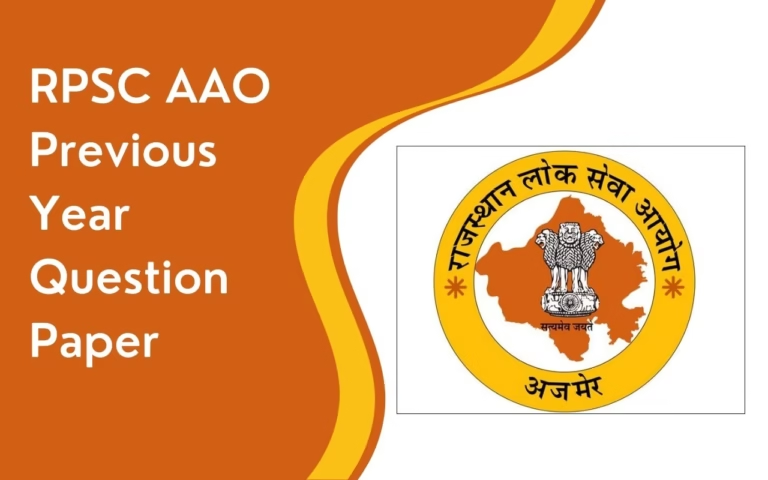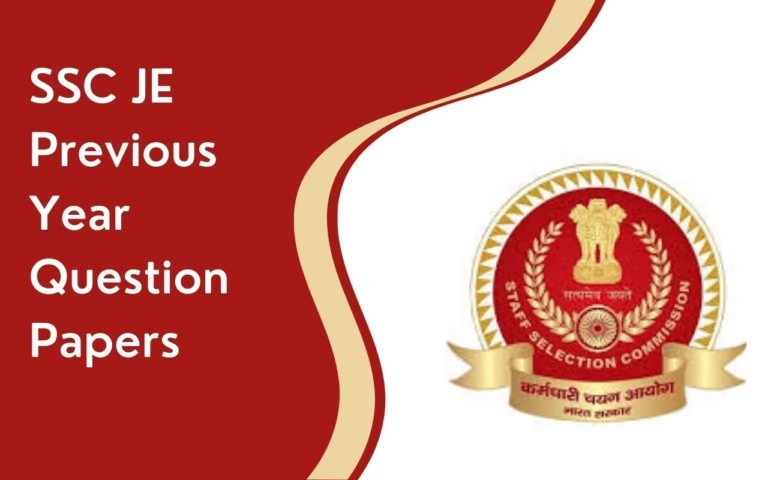SSC CGL Syllabus 2025: The Staff Selection Commission (SSC) organizes the SSC CGL Exam annually to select candidates for different government job roles. Preparing for this exam requires a thorough understanding of the syllabus and a well-structured study plan.
The SSC CGL syllabus includes four key subjects: General Intelligence & Reasoning, Quantitative Aptitude, English Language & Comprehension, and General Awareness. You can find the detailed syllabus in this article below.
SSC CGL Syllabus 2025
To excel in any exam, it’s essential for candidates to understand the complete and accurate exam pattern along with a detailed syllabus. This helps in devising a foolproof strategy to achieve high scores. In this article, the exam pattern and syllabus for each phase of the SSC CGL Exam are explained.
The Staff Selection Commission (SSC) will conduct the recruitment process for Combined Graduate Level (CGL) posts through a two-tier system. The exam stages for SSC CGL 2025 are as follows:
| Tier | Type | Mode |
| Tier – I | Objective Multiple Choice | Computer-Based (Online) |
| Tier – II | Paper I (Mandatory for all posts)
Paper II (For applicants to Junior Statistical Officer posts) Paper III (For applicants to Assistant Audit Officer/Assistant Accounts Officer posts) Objective Multiple Choice Questions (except Module-II of Section-III of Paper-I) |
Computer-Based (Online) |
With this structured format, candidates can plan their preparation effectively based on the specific requirements of each tier.
SSC CGL Syllabus 2025 for Tier 1 Exam
Students preparing for the SSC CGL Tier-1 exam should first familiarize themselves with the subject-wise syllabus. The Tier-1 exam covers four key sections: Quantitative Aptitude, General Intelligence and Reasoning, English Language, and General Awareness. A comprehensive breakdown of the SSC CGL Syllabus 2025 for the Tier-1 exam is provided below.
SSC CGL Syllabus 2025 for Quantitative Aptitude
The Quantitative Aptitude section in the SSC CGL Tier-1 exam evaluates a candidate’s numerical ability and number sense. This section appears in both Tier-1 and Tier-2 exams, with several overlapping topics.
By thoroughly preparing these chapters, you can save valuable time when advancing to the next stage. Here are the key topics outlined by the commission for the SSC CGL Quantitative Aptitude section:
| SSC CGL Syllabus 2025 for Quantitative Aptitude | |
| Computation of whole numbers | Decimals |
| Fractions | Relationships between numbers |
| Profit and Loss | Discount |
| Partnership Business | Mixture and Alligation |
| Time and Distance | Time & Work |
| Percentage | Ratio & Proportion |
| Square Roots | Averages |
| Interest | Basic algebraic identities of School Algebra |
| Elementary Surds | Graphs of Linear Equations |
| Triangle and its various kinds of centres | Congruence and similarity of triangles |
| Circle and its chords, tangents, angles subtended by chords | Common tangents to two or more circles |
| Triangle | Quadrilaterals |
| Regular Polygons | Right Prism |
| Right Circular Cone | Right Circular Cylinder |
| Sphere | Heights and Distances |
| Histogram | Frequency polygon |
| Bar diagram & Pie chart | Hemispheres |
| Rectangular Parallelepiped | Regular Right Pyramid with triangular or square base |
| Trigonometric Ratio | Degree and Radian Measures |
| Standard Identities | Complementary angles |
SSC CGL Syllabus 2025 for General Intelligence and Reasoning
The General Intelligence and Reasoning section of the SSC CGL syllabus 2025 includes both verbal and non-verbal topics. This section is designed to assess a candidate’s alertness and ability to think quickly in various situations. Below are the key topics included in the General Intelligence and Reasoning syllabus for SSC CGL:
| SSC CGL Syllabus 2025 for General Intelligence and Reasoning | |
| Analogies | Similarities and differences |
| Space visualization | Spatial orientation |
| Problem-solving | Analysis |
| Judgment | Blood Relations |
| Decision making | Visual memory |
| Discrimination | Observation |
| Relationship concepts | Arithmetical reasoning |
| Figural classification | Arithmetic number series |
| Non-verbal series | Coding and decoding |
| Statement conclusion | Syllogistic reasoning |
SSC CGL Syllabus 2025 for English Language
In the SSC CGL Tier-1 exam, the English section will be conducted solely in English. This section assesses a candidate’s understanding of the language, as well as their ability to comprehend and write clearly. To score well in this part of the exam, candidates should focus on mastering key topics that will help them perform better.
| SSC CGL Syllabus 2025 for English Language | |
| Idioms and Phrases | One word Substitution |
| Sentence Correction | Error Spotting |
| Fill in the Blanks | Spellings Correction |
| Reading Comprehension | Synonyms-Antonyms |
| Active Passive | Sentence Rearrangement |
| Sentence Improvement | Cloze test |
SSC CGL Syllabus 2025 for General Awareness
This section aims to evaluate the candidate’s knowledge of General Awareness and General Science, focusing on how they relate to society. The syllabus for this section covers a wide range of topics.
| SSC CGL Syllabus 2025 for General Awareness | |
| India and its neighbouring countries | Science |
| History, Culture, Geography, Economic Scene | Current Affairs |
| General Policy & Scientific Research | Books and Authors |
| Sports | Important Schemes |
| Important Days | Portfolio |
| People in News | Static GK |
SSC CGL Syllabus 2025 for Tier 2 Exam
Once the preliminary exam is completed, candidates must start preparing for the Tier-2 Exam. The Mains Exam will be conducted online in an objective, multiple-choice format, except for Module II (Data Entry Speed Test) in Section III of Paper-I. Below, you will find a detailed overview of the SSC CGL Tier-2 syllabus and exam pattern.
SSC CGL Syllabus 2025 for Tier 2 Paper 1
Paper 1 in the Tier 2 exam is mandatory for all candidates and is worth 390 marks. It’s essential for candidates to thoroughly understand the topics covered in each section. While Mathematics, Reasoning, English, and General Awareness are part of both Tier 1 and Tier 2, the approach to preparation for each level varies significantly.
Refer to the table below for the complete SSC CGL Tier 2 Paper 1 syllabus and all topics.
| SSC CGL Syllabus 2025 for Tier 2 Paper 1 | ||
| Section | Module | Topics |
| Section I | Mathematical Abilities |
|
| General Intelligence & Reasoning |
|
|
| Section II | English Language and Comprehension |
|
| General Awareness |
|
|
| Section III | Computer Proficiency |
|
SSC CGL Syllabus 2025 for Tier 2 Paper 2
Candidates who selected the JSO (Junior Statistical Officer) position during the application process and qualified for the Tier 1 cutoff are eligible to appear for Paper 2 of the Tier 2 exam. To simplify preparation, we’ve provided the complete SSC CGL Tier 2 syllabus for Paper 2 in the table below, covering all essential topics.
| SSC CGL Syllabus 2025 for Tier 2 Paper 2 | |
| Subject | Topics |
| Collection, Classification, and Presentation of Statistical Data | Primary and secondary data, methods of data collection, tabulation of data, graphs, charts, frequency distributions, diagrammatic presentation of frequency distributions. |
| Measures of Central Tendency | Mean, median, mode, quartiles, deciles, and percentiles. |
| Measures of Dispersion | Range, quartile deviations, mean deviation, standard deviation, and measures of relative dispersion. |
| Moments, Skewness, and Kurtosis | Types of moments and their relationships, definitions, and measures of skewness and kurtosis. |
| Correlation and Regression | Scatter diagram, simple correlation coefficient, simple regression lines, Spearman’s rank correlation, association of attributes, multiple regression, multiple and partial correlations (three variables only). |
| Probability Theory | Definitions of probability, conditional and compound probability, independent events, Bayes’ theorem. |
| Random Variable and Probability Distributions | Random variables, probability functions, expectation, variance, higher moments, distributions (Binomial, Poisson, Normal, Exponential), joint distribution of two random variables (discrete). |
| Sampling Theory | Population and sample concepts, parameter and statistic, sampling and non-sampling errors, techniques (simple random, stratified, multistage, cluster, systematic, quota sampling, and others), sampling distribution (statement only), sample size decisions. |
| Statistical Inference | Point estimation, interval estimation, properties of a good estimator, methods of estimation (Moments, Maximum Likelihood, Least Squares), hypothesis testing (Z, Chi-square, and F tests), small and large sample tests, confidence intervals. |
| Analysis of Variance (ANOVA) | One-way and two-way classified data analysis. |
| Time Series Analysis | Components of time series, trend determination methods, and seasonal variation measurement methods. |
| Index Numbers | Meaning, types, problems in construction, formulas, base shifting, splicing, cost of living index, and uses of index numbers. |
SSC CGL Syllabus 2025 for Tier 2 Paper 3
The SSC CGL Tier 2 syllabus is categorized into two sections: Finance & Accounts and Economics & Governance. Below is a breakdown of the key topics covered under each section:
| SSC CGL Syllabus 2025 for Tier 2 Paper 3 | ||
| Part | Subject | Topics |
| Part A: Finance and Accounts-(80 marks) | Financial Accounting |
|
| Basic concepts of accounting |
|
|
| Part B: Economics and Governance-(120 marks) | Comptroller & Auditor General of India- Constitutional provisions, Role and responsibility | |
| Finance Commission-Role and functions | ||
| Basic Concept of Economics and introduction to Micro Economics |
|
|
| Theory of Demand and Supply |
|
|
| Theory of Production and cost |
|
|
| Forms of Market and price determination in different markets |
|
|
| Indian Economy |
|
|
| Economic Reforms in India |
|
|
| Money and Banking |
|
|
| Role of Information Technology in Governance | ||
SSC CGL Exam Pattern 2025
Check the exam pattern for SSC CGL 2025 exam for tier 1 and 2 below:
SSC CGL Tier 1 Exam Pattern
The SSC CGL Tier 1 Exam is qualifying in nature. According to the SSC CGL Syllabus 2024, the Tier 1 Exam consists of four sections, each containing 25 questions. Candidates are given 60 minutes to complete the exam, and there is a penalty of 0.50 marks for every incorrect answer. Below is the detailed Tier 1 Exam pattern:
| SSC CGL Tier 1 Exam Pattern | |||
| Sections | No. of Questions | Total Marks | Time Allotted |
| General Intelligence and Reasoning | 25 | 50 | A cumulative time of 60 minutes
(1 hour) |
| General Awareness | 25 | 50 | |
| Quantitative Aptitude | 25 | 50 | |
| English Comprehension | 25 | 50 | |
| Total | 100 | 200 | |
SSC CGL Tier 2 Exam Pattern
Paper-I will be held in two sessions, Session I and Session II, on the same day. Both sessions are mandatory for all candidates who pass Paper-I. Session I will cover Section I, Section II, and Module I of Section III, while Session II will focus on Module II of Section III. Candidates must clear all sections of Paper-I to move forward in the process.
| SSC CGL Tier 2 Exam Pattern | |||||
| Paper 1 | |||||
| Sections | Module | Subject | No. of Questions | Marks | Weightage |
| Section I | Module-I | Mathematical Abilities | 30 | 60*3 = 180 | 23% |
| Module-II | Reasoning and General Intelligence | 30 | 23% | ||
| Section II | Module-I | English Language and Comprehension | 45 | 70*3 = 210 | 35% |
| Module-II | General Awareness | 25 | 19% | ||
| Section III | Module-I | Computer Knowledge Test | 20 | 20*3 = 60 | Qualifying |
| Module-II | Data Entry Speed Test | One Data Entry Task | Qualifying | ||
| Paper 2 and 3 | |||||
| Paper | Section | No. of question | Maximum Marks | Duration | |
| Paper II | Statistics | 100 | 200 | 2 hours | |
| Paper III | General Studies (Finance and Economics) | 100 | 200 | 2 hours | |
SSC CGL Syllabus 2025 FAQs
What is the SSC CGL exam pattern for 2025?
The SSC CGL exam consists of Tier-1 and Tier-2 stages, with multiple-choice questions, and some sections being qualifying in nature.
What subjects are included in the SSC CGL Tier-1 syllabus?
The SSC CGL Tier-1 syllabus covers Quantitative Aptitude, General Intelligence & Reasoning, English Language, and General Awareness.
How many marks are awarded for each question in the SSC CGL Tier-1 exam?
Each question in the Tier-1 exam carries 2 marks, with a total of 100 questions worth 200 marks.
What is the time duration for the SSC CGL Tier-2 exam?
The time duration for the SSC CGL Tier-2 exam is 2 hours for each paper.
Is there negative marking in the SSC CGL Tier-1 exam?
Yes, there is a negative marking of 0.50 marks for each incorrect answer in the Tier-1 exam.




